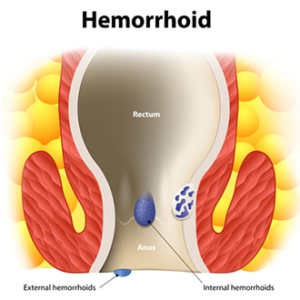Oral (Throat) Chlamydia_ Symptoms and Causes
Oral (Throat) Chlamydia: Symptoms, Causes, and Treatment
Introduction to Oral (Throat) Chlamydia
Oral chlamydia, caused by the Chlamydia trachomatis bacteria, is a sexually transmitted infection (STI) typically contracted through oral sex. While more common in the genital or anal regions, this infection can also affect the mouth and throat. Many people may not realize they have oral chlamydia as the symptoms can be mild or easily mistaken for other conditions. In this guide, we will explore the symptoms, causes, risks, and treatment options for oral chlamydia.
Symptoms of Oral Chlamydia
Oral chlamydia can often be asymptomatic, meaning many individuals may not show any signs of infection. However, when symptoms do occur, they may include:
-
Sore Throat: A common symptom that can be confused with other illnesses such as colds, strep throat, or allergies.
-
Redness or Irritation: The throat or mouth may appear red or inflamed.
-
Swollen Tonsils and Lymph Nodes: Enlargement of the tonsils and lymph nodes in the neck can be a sign of infection.
-
Mouth Sores and Bumps: Painful sores or bumps on the tongue or lips.
-
White Spots: The back of the throat or tonsils may develop white patches.
-
Fever and Fatigue: Some people may experience mild fever or a general sense of tiredness.
How Serious is Oral Chlamydia?
While oral chlamydia itself is not usually life-threatening, it can lead to secondary infections and complications if left untreated. It can contribute to gum disease such as gingivitis or periodontal disease, resulting in bleeding gums, dental pain, and tooth loss. Furthermore, oral chlamydia increases the risk of transmitting other STIs, including HIV. The infection may also spread to other parts of the body, causing conditions like:
-
Conjunctivitis (eye infection)
-
Epididymitis (swelling in the male reproductive system)
-
Pelvic inflammatory disease (PID) in women
-
Ectopic pregnancy
-
Liver inflammation (perihepatitis)
-
Pneumonia
-
Infertility
Transmission and Risk Factors
Oral chlamydia is primarily transmitted through oral sexual contact, including oral-penile, oral-vaginal, and oral-anal interactions. It is less likely to be passed from the throat to the vagina or rectum. Risk factors for contracting oral chlamydia include:
-
Having multiple sexual partners
-
Not using condoms or dental dams during oral sex
-
Engaging in unprotected sex with someone who has a known STI
-
A history of STIs
While oral chlamydia is less common than genital chlamydia, studies show that it still poses a significant risk for those engaging in unprotected oral sex.
Diagnosis of Oral Chlamydia
The most accurate way to diagnose oral chlamydia is through a swab test of the mouth and throat. The sample is then analyzed using a technique called nucleic acid amplification testing (NAAT), which is highly sensitive and can detect even low levels of the bacteria. Testing for STIs beyond the genitals is not always routine, which is why oral chlamydia often goes undiagnosed. If you suspect you have been exposed to chlamydia, it’s important to get tested, even if symptoms are not present.
Treatment for Oral Chlamydia
Oral chlamydia can be effectively treated with antibiotics, just like genital chlamydia. The Centers for Disease Control and Prevention (CDC) recommend the following treatment options:
-
Doxycycline: 100 mg twice daily for 7 days
-
Azithromycin: 1 gram in a single dose
-
Levofloxacin: 500 mg daily for 7 days
It’s crucial to avoid sexual activity during treatment and for at least 7 days afterward to prevent the spread of the infection. Additionally, all sexual partners should be notified and treated to prevent reinfection.
Prevention of Oral Chlamydia
The most effective way to prevent oral chlamydia is through abstinence from oral sex. However, if abstinence is not an option, there are several ways to reduce the risk of contracting or transmitting the infection:
-
Use Condoms and Dental Dams: These barriers can significantly reduce the risk of STI transmission during oral sex.
-
Limit Sexual Partners: Reducing the number of sexual partners decreases the likelihood of exposure to chlamydia and other STIs.
-
Get Regular STI Screenings: Routine testing is essential, especially for individuals who are sexually active with multiple partners.
Can Chlamydia Be Passed Through Kissing?
Despite some misconceptions, there is no evidence to suggest that chlamydia can be transmitted through kissing. The infection is spread through sexual contact, not casual contact like kissing or sharing utensils.
Conclusion
Oral chlamydia is a serious STI that often goes undiagnosed due to its subtle or absent symptoms. If you engage in oral sex, regular STI screenings and preventive measures like using condoms or dental dams are essential for your sexual health. With timely diagnosis and appropriate treatment, oral chlamydia can be cured, preventing further complications and reducing the risk of transmission to others.
Expert Recommendations
For individuals sexually active, regular STI tests are crucial, regardless of symptom presence. Consult a healthcare provider for testing if you think you may have been exposed to oral chlamydia or any other STI.







